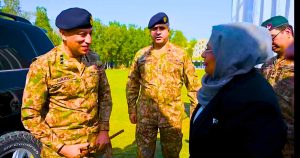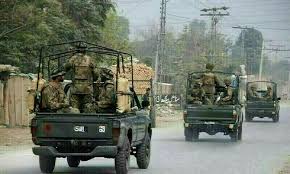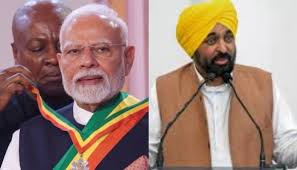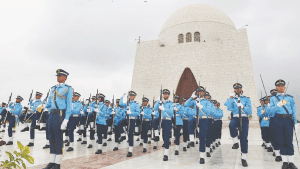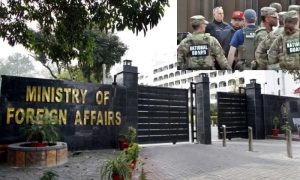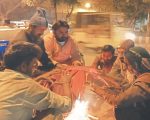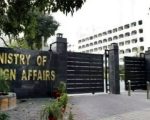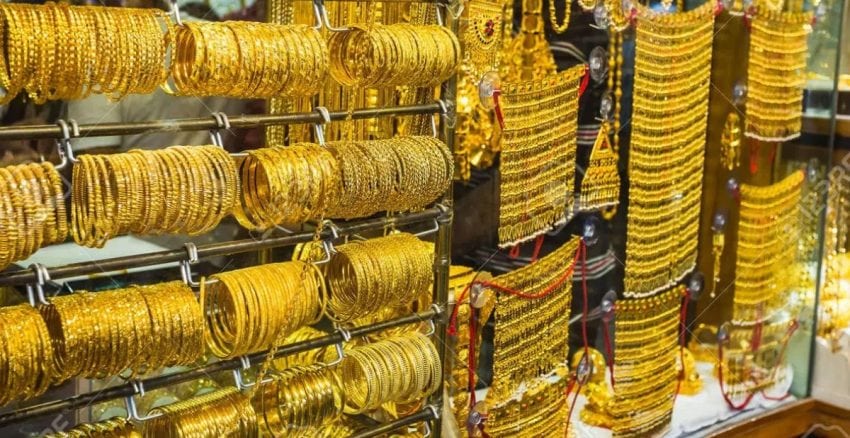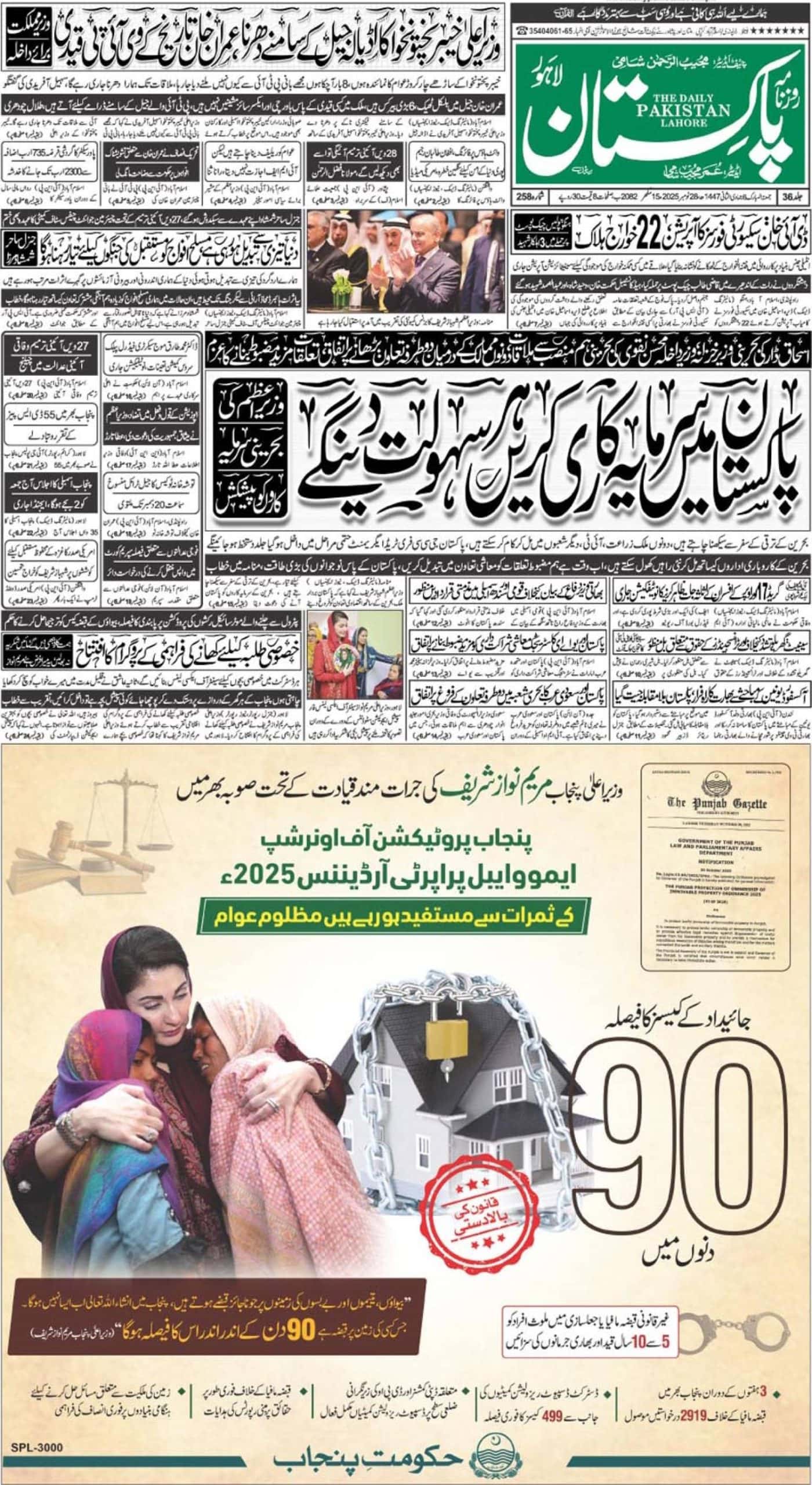Pakistan has been a victim of stereotypes, which over the course of decades have built a negative perception internationally of this Islamic country, its citizens and their religion. Generally, foreign tourists visiting Pakistan return to their homes with a perception contrary to the one international media planted in their minds. This indicates that the negative perceptions about Pakistan extend beyond the spillover effects of the country’s geo-strategic regional policy—something which many pro-western pundits erroneously believe is the single biggest factor for presenting Pakistan in a bad light on the world stage.
Issues underlying the misperceptions
Primarily there are four major issues linked with the negative perceptions, which have led to accumulating diplomatic pressure on Pakistan. The first of these is the lingering dispute over Kashmir with India, the second is the Taliban insurgency in Afghanistan, the third is the propaganda regarding mistreatment of minorities and fourth issue is alleged human right abuses linked with enforced disappearances particularly in the northwest of Pakistan.
On the first two issues linked with national security, Pakistan has been under fire from India, the US, NATO and the government in Kabul for supporting what they call insurgent groups from within and outside the country’s territory to fan militancy in Afghanistan and Indian disputed Kashmir region. Both issues are inter-linked in terms of India’s role to use Afghanistan to sponsor terrorism in Pakistan in an effort to pressurize Islamabad into giving in to the Kashmir cause.
Insurgency& media warfare patterns
The notorious principle of “ the might is right” still continues to figure again in the statecraft when it comes to international power politics. With the passage of time, the militaries, secret services and governments the world over have extensively undertaken deceptive manipulations using insurgent groups, soft and offensive diplomacy through mainstream and social media. Almost all major world powers have used modern mediums of communications to project their anti-terror policies, while behind the scenes, they have not hesitated in running their foreign policies through proxy insurgent groups. Hence, they have used insurgents who carried out terror attacks which led to create favourable international and domestic public pressures to change the political landscape of a state or the direction of a foreign policy of a country on their target list. Even the false flag operations inside the countries by secret services the world over, have been a weapon of choice to change public opinions.
How India runs with the hare & hunts with hounds
India established its foothold after 9/11 in Afghanistan and created adverse political conditions increasing diplomatic pressure on Pakistan to a tipping point to unsuccessfully force Islamabad to put the Kashmir dispute on the backburner. Since then, there has been a surge of violence in south and southwest of Pakistan especially in Baluchistan and Karachi where India used Baloch rebels and Altaf Hussain led MQM respectively to fuel the unrest.
Not long ago Indian sponsored over 100 buses crisscrossing on the streets of London with advertisements inscribed with “Free Baluchistan, Save the Baloch People” and “Stop Enforced Disappearances” in Baluchistan. The terror attacks have significantly reduced In Karachi after targeted security operations. However, Indian game plans for Baluchistan are far from over. New Delhi is likely to grant citizenship to BrahumdaghBugti and other terrorists from Baluchistan who are currently in self-exile in Switzerland. With the foreseeable grant of citizenship, India would further facilitate them to travel across influential world capitals to internationalize “ human rights violations” in Baluchistan notwithstanding the fact that, unlike the disputed Kashmir region, Baluchistan has no locus standi at any international forum.
In May 2015, the then BJB government’s sitting Defense Minister, late Manohar Parrikar had vowed to sponsor terrorism in Pakistan by saying“We have to neutralize terrorists through terrorists only”. Despite an open confession of sponsoring terrorism in Pakistan, his statements were largely ignored by the international media. Islamabad too, did little diplomatically to exploit his statement at all relevant international forums.
In contrast, since political, economic and geostrategic interests of the US, other Western nations and India are in line with one another, therefore, they effectively use diplomacy and international media to generate a perception the world over that Pakistan uses insurgents groups as a tool of its foreign policy in the region.
Iran, US & Russian’s pattern of supporting insurgencies
The so-called Islamic State or Daeshemerged in 2014 out of several splinter groups in Iraq following US military intervention against the then President Saddam Hussain in 2003. Daesh originally was a reactionary force against the Iranian sectarian agenda in Iraq but subsequently, it sloganeered on Islam to attract wide support from Muslim countries. The US, Israel and many other states in the Middle East allegedly supported and funded Daesh and weaponized it to meet their geo-strategic goals in different regions of the world. With ruthless beheadings, the Daesh was used to tarnish the image of Islam on international media which led to target Muslim communities the world over in retaliatory violence. Russian and Iran accuse the US of usingDaeshas a proxy in the Middle East and Afghanistan. Donald Trump before being elected the US President, accused the then President Barack Obama of being the commander-in-chief of Daesh. Iran spent over 30 billion US dollars to fund insurgency in Iraq, Syria, Yamen, Afghanistan and many other countries. General Mohammad Ali Jaffari who commanded elite Iranian revolutionary guards until mid-April 2019, admitted in 2016 that Tehran militarily trained 200,000 youngsters from Pakistan, Afghanistan, Yamen, Syria and Iraq to prepare the ideologically Shia state ahead of what he called the challenges of end of times. A large number of Shia insurgent infiltrated the Middle East from Pakistan via Iran to fight in Iraq and Syria. But presenting Iran in a negative light has been a taboo in Pakistan. The debate on private media on this subject could have prompted across the board action against Shia terrorists like those of Daesh and other extremist groups in Pakistan.
Mullah Akthar Mansoor, the then Afghan Taliban head, was killed in a US drone attack in 2015 while he was traveling from Iran to Pakistan. Similarly, Tehran hosted families of Alqeada leaders. But there was little outcry in Pakistani and international media.
The US blames Pakistan, Russia and Iran for providing shelter and weapons to Afghan Taliban. The accusations may be exaggerated but they are not far removed from the facts. Moscow and Tehran suspect that the US is using Daesh in Afghanistan to destabilize them while Islamabad has its own reasons to believe that India-US alliance in Afghanistan is designed to encircle Pakistan geo-strategically. However, unlike other states, over the years Pakistan has been singled out for supporting Taliban, who, according to BBC, control or contest nearly 70 percent Afghan territory.
Policy errors tarnishing image of Pakistan
Pakistani and international media have invested a far more time in propagating western narrative against Pakistan army and its secret service ISI regarding their alleged support for militant groups compared to those of other regional and international players whose role to promote various insurgent groups outmatch with that of Pakistan. This is partially because of the controversial tactical policies of the former military dictator General Pervez Musharraf.
He perpetuated his rule from October 1999 to August 2008 through policies which portrayed Islam and Madrassas as a greater threat to the Western interests in the region and beyond. Behind the scenes, intelligence services under his command allegedly abetted clerics at Lal Masjid in Islamabad in July 2007 to challenge the writ of the government. The incident was aimed at creating public panic through media carrying discreet sectarian agenda. It was hyped up to the point of frenzy which led to conduct an operation against the clerics. Subsequently, hundreds of students were burnt to death through use of phosphorus notwithstanding the fact that the negotiations with the clerics were successful and they were ready to surrender and vacate the Madrassah. Later on, weapons were smuggled into the Madrassah to make it look like a battleground as if there was a face to face gun-battle there. In fact, through this operation, Musharraf once again projected himself as the one who was fighting the American war on terror at a time when the movement of lawyers was gaining ground to oust him from power.
His ill-advised action at Lal Masjid subsequently ensued retaliatory violence by the militant groups who unleashed a years-long terror campaign which since then has led to the killing of 35,000 Pakistani citizens and security personnel and injuring of 48000 others.
Musharraf invested a lot of political capital to tarnish the image Madrassas despite the fact that not even one percent of religious schools are involved in extremism. Negative stories aboutMadrassas, ISI, Pakistan army, and, mistreatment of minorities sell like hotcakes in the international media. The military used its clout to win over defiant journalists and media houses to improve its image. However, Madrassas which meet lodging and boarding needs of more than 2.6 million poor students, continue to be vilified and there is none to defend them.
Human rights abuses and mistreatment of minorities
In comparison with the West, Pakistani society is stronger given its inter-connected family structure, unifying bond of Islam, and the system of discreet generosity with which people look after their dear and near ones. The trouble starts when fault-lines of social fabrics are analyzed from the Western perspective. That is why the Western media, many foreign, Pakistani journalists and NGOs have struggled hard to report and analyze isolated incidents of mistreatment with women and minorities in an exaggerated manner.
They built up a misleading narrative to suggest that minorities are on the hit-list of extremists all the time. Many incidents of personal disputes on properties within and outside the minority communities were reported as crimes on religious grounds against them.
The cases of enforced disappearances are yet another source of information which has tarnished the image of Pakistan. This is where Pakistan needs to put its own house in order and release all those against whom there is no hard evidence and prosecute those against whom there is ample evidence of their involvement in terrorism. The highest number of cases of rape against women occur in the US, UK, France, other Western stations, including India, and yet Pakistan figures high on international media for abusing women rights.
Credible Tools to Reverse Negative Perceptions
The military, by and large, has now managed to control a national narrative on screens of Urdu language private news channels on issues concerning the country’s national security. However, in the absence of vibrant private English news channels, Pakistan has been failing to portray the other side of the picture on critical issues. For this to happen, Pakistan needs private news channels in the English language like rival neighbouring India which has at least 10 to propagate issues connected with its foreign policy.
ThreePakistani English channels launched in the past by Dawn, Express and Jang Groups failed to take off— partially because they did not have financial backing. An equally important factor was complete lack of policy directions and confusion about what issues they needed to highlight and how to make their professional presence felt. Unnecessary local and national issues were given preference over those which were hurting the country’s geostrategic interests in the region. Hence their failure was a foregone conclusion. The same problem persists with the country’s state-owned English news channel PTV World which is financially surviving only at the cost of hard-earned money of taxpayers.
Most recently Indus News, a new English language private news channel has emerged on cable networks. It may be too early to judge its capacity and capability. Nonetheless, its trial-run indicates that channel’s professional judgment to pick up issues to highlight is better than the previous three English channels which were copycat versions of Urdu news channels. However, it appears to be carrying a somewhat unnecessary focus on farfetched international issues by perhaps broadcasting wire agencies without indigenized news input.
The government much restructure state-owned English news channel PTV World by giving it a greater autonomy, on the pattern of BBC World. Both state-owned and private English news channels need to be run with the clear objective of developing their professional capacity so that they could unofficially become vibrant tools of The country’s foreign policy.
The government of Pakistan must encourage more English news channels and finance them if necessary to project its foreign policy in an effort to offset an unending propaganda against the country. The External Publicity Wing of Ministry of Information should be attached to the Ministry of Foreign Affairs to better handle intricacies of propaganda warfare on foreign policy issues.
Packaging issues on English channels
Television journalism requires creativity and presentation of facts to differentiate one news channel over the other. The conventional lengthy talks shows are losing their relevance on television screens after the emergence of social media. Hence, the challenge is how to quickly transfer information in short news packages ranging from two to five minutes long, which after being aired on mainstream cable and satellite networks, can be quickly transmitted on social media. The short and medium-range news packages and news programs must be shared on major social media platforms through paid advertisements to attract a greater viewership.
English news channels after being restructured on professional lines must set up investigation cells to dig up facts on issues directly affecting the country’s national security, economy and Muslims all over the world.
In order to offset the propaganda on issues like forced conversion of members of the Hindu community, it is high time to bring up facts on English news channels to counter international media misreporting on Pakistan.


